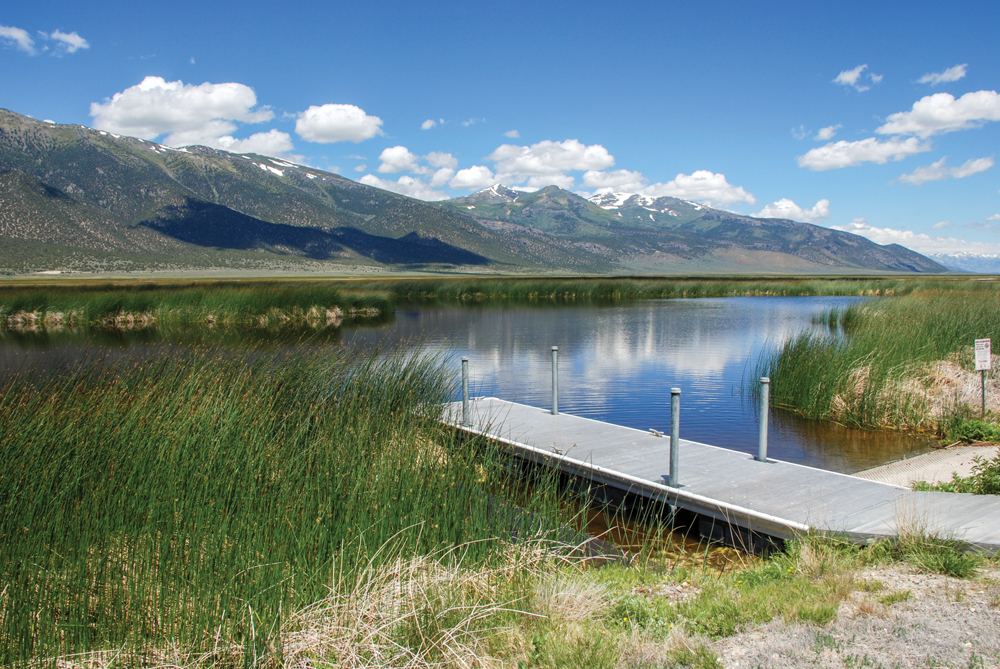Ruby Lake National Wildlife Refuge
Spring 2021
This special section of Nevada’s outback offers natural solitude for those with an adventurous spirit.
BY TIM HAUSERMAN
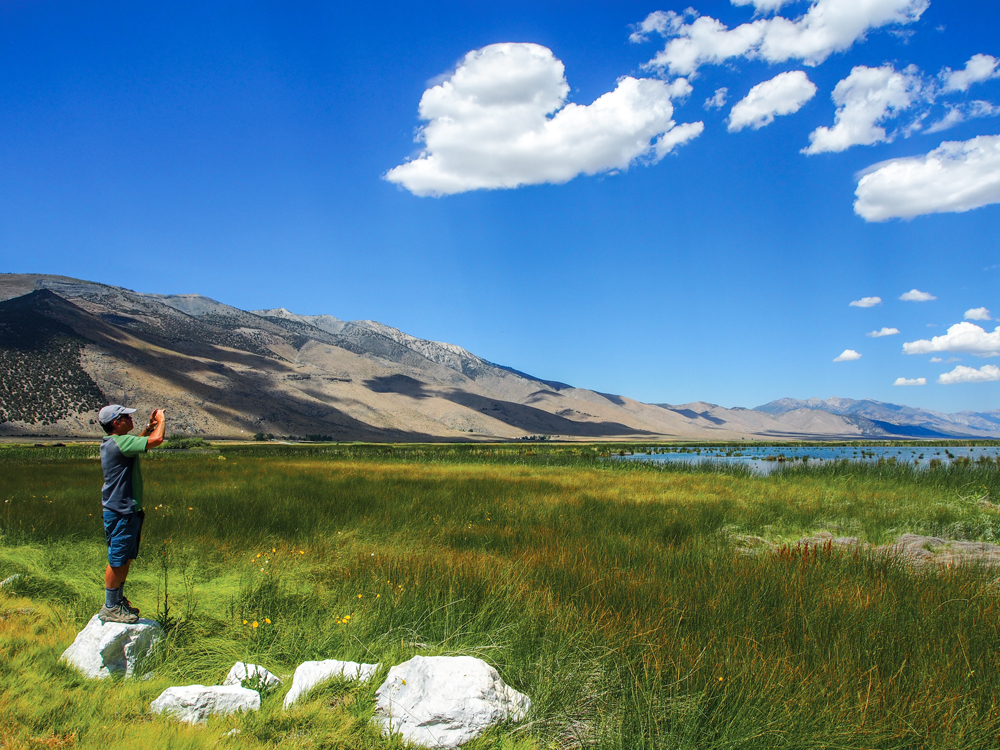
East of the crest of Nevada’s Ruby Mountains lies the immense Ruby Valley, a pastoral expanse of quiet and prosperous ranch land. The dirt Ruby Valley Road follows the western edge of this high desert valley for 35 miles, before finally arriving at an oasis: A huge wetland of marshes, shallow lakes, and drainage ponds that encompasses the Ruby Lake National Wildlife Refuge, the most remote wildlife refuge in the continental U.S.
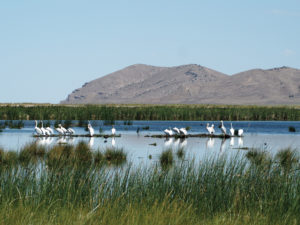
Established in 1938 by President Franklin D. Roosevelt, the refuge, located southeast of Elko, includes nearly 40,000 acres. About half the land is marsh with the rest made up of meadows, grasslands, and the drier sage uplands that border the moist heart of the refuge. This wetland in the midst of the high desert happens because the Ruby Mountain snowpack drains into more than 200 springs heading east. All that water feeds the farmland, and at the valley’s low point creates the marsh. It’s a haven and god-send for birds making their north-south pilgrimages as it is the only major wet area for hundreds of miles.
NOT JUST FOR WILDLIFE
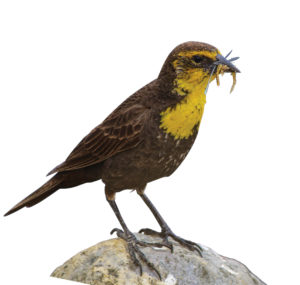
The place to start your visit is the well maintained but narrow tour road that follows a system of dikes in the northern part of the refuge. It provides access to platforms to fish from, drainage and collection ditches to walk along, and everywhere, plenty of birds to ponder. On a quick tour this past summer, I marveled at the enormous trout in the crystal clear collection pond, was treated to a muskrat swimming past in a drainage ditch, and was enchanted by more birds than I could count. But the true highlight was looking across the water to the Ruby Mountains and realizing that the only sounds I could hear were a gentle breeze and talking birds.
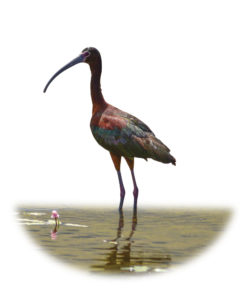
Wildlife Refuge Project Leader Pete Schmidt has been working at Ruby Lake for six years, and it is “that quiet, and the nice dark sky,” that are the highlights for him. He also enjoys the change of seasons, with each one bringing different varieties of wildlife to enjoy.
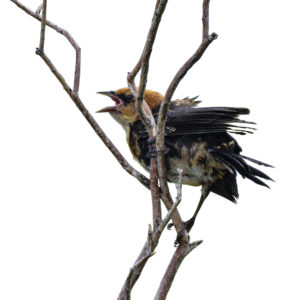
Schmidt says April and May are the best times for birding, with the spring arrival of massive numbers (depending upon the winter, the road conditions, however, might still be challenging in April). But any time of year the refuge will have interesting bird watching. I visited in the middle of summer and the highlight was an enormous group of white pelicans, blue herons, white-faced black ibis, coots, and ducks, and plenty of other birds I couldn’t identify. In fact, more than 240 bird species can be seen in the refuge, including the largest breeding concentration of canvasbacks in the western continental U.S., and Nevada’s only resident population of trumpeter swans.
Lots of folks come to the refuge not to ponder the birds, however, but to cast a line into the various waterways. In the collection ditch or spring ponds large trout can be found. In fact, the state record rainbow and tiger trout were pulled out of the refuge’s waters. In the south marsh area where small boats are allowed, bass fishing is the attraction.
“The bass are not huge, but there are a lot of them,” Schmidt says. “Folks can bring the family and catch a bunch of fish.”
In the fall, waterfowl hunting is also allowed during a short hunting season. There is a strict prohibition against shooting white birds to make sure a hunter doesn’t accidentally knock down a swan.
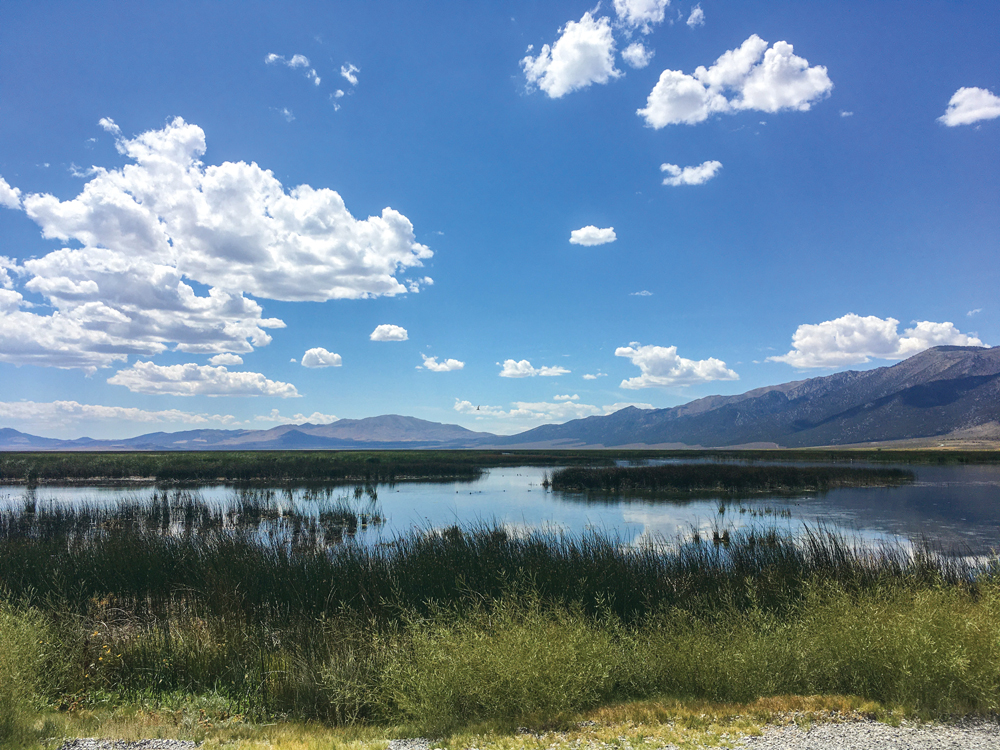
TAKE REFUGE
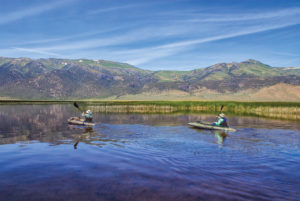
Ruby Lake’s remote location makes it a challenge to visit, but that it is also what makes it appealing. From the north visitors are in for several hours of often-slow driving from Elko, and from the south it is 60 miles of mostly dirt road from U.S Route 50 to the refuge. It is not really on the way to anywhere, so adventurers have to make an extra effort to get there. But for me, in the summer of 2020, that was its attraction. I was ready to get to the middle of nowhere; the fewer people I saw the better. Of course, I was not the only one with that philosophy last year. This was the summer that everyone wanted to go to nowhere. Schmidt says the refuge saw five times as many visitors as normal in 2020.
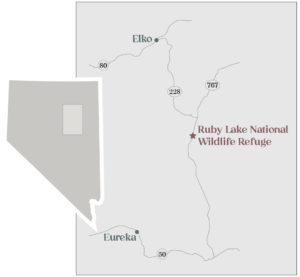 Which explains why the South Ruby Campground, 1.5 miles south of the refuge headquarters, was nearly full when I arrived. The campground sits in the pinyon pines overlooking the valley below. It’s well laid out, but with tight small spaces. Given I had just emerged from five days of glorious backpacking in the Ruby Mountains, it was a shocker to see that the campground was bustling with people, primarily folks getting their fishing equipment ready for the next morning’s jaunt.
Which explains why the South Ruby Campground, 1.5 miles south of the refuge headquarters, was nearly full when I arrived. The campground sits in the pinyon pines overlooking the valley below. It’s well laid out, but with tight small spaces. Given I had just emerged from five days of glorious backpacking in the Ruby Mountains, it was a shocker to see that the campground was bustling with people, primarily folks getting their fishing equipment ready for the next morning’s jaunt.

Looking for a more remote camping experience? The land to the north of the refuge is mostly private land, but one potential disbursed camping spot is available on the Forest Service road to the Overland Lake Trail. This steep trail heads to the Ruby Crest Trail as well as Overland Lake in the Ruby Mountains. Just a few miles south of the refuge, there is Bureau of Land Management land where more disbursed camping opportunities can be found.
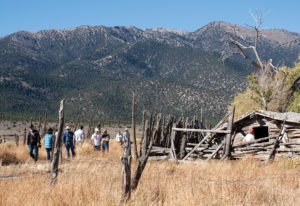
MORE THAN MEETS THE EYE

History buffs may be interested to check out the cabin built by Jacob Bressman, which is located at the north end of the refuge. In 1880 he started a cattle ranch in the Ruby Valley. An interpretative panel and Jacob’s grave site is near the cabin. If you are headed south from the refuge you can also stop into the Fort Ruby Historical Site. Here a military post was operational between 1862-1869 to support the Overland Mail and Pony Express Route that went through the valley. It’s a pretty low-key historical landmark, with just a few remaining deteriorated buildings and interpretative panels, but it does provide a great last view of the Ruby Valley before the long drive to U.S. 50.
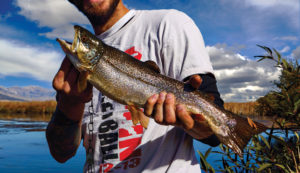
The road south from Ruby Valley, now romantically called County Road 3, journeys on mostly dirt to reach U.S. 50. It’s a jaunt across isolated desert valleys and gentle climbs through lightly forested ridges. Visitors will see very few cars and find that true Nevada isolation they may be seeking. Although, just when you think you couldn’t be any more in the middle of nowhere, you suddenly arrive at a junction right in the middle of a major mining operation. The well-used road is as wide as a six-lane freeway as it crosses over your little piece of nothingness tranquility. It needs to be that wide for the enormous earthmoving machines that travel between two big mines. Visitors should keep their eyes peeled for a truck or water tender with wheels bigger than most cars.
The scoop
Before going, check out all the essential details at fws.gov/refuge/ruby_lake. Other than the campground and a few pit toilets in the refuge, there are no other amenities at the site or anywhere nearby. Be sure to bring everything you might need for several days including water and food. Check the weather forecast and road conditions before venturing out to the refuge.
GET WILD
Ruby Lake National Wildlife Refuge
fws.gov/refuge/ruby_lake, 775-779-2237
